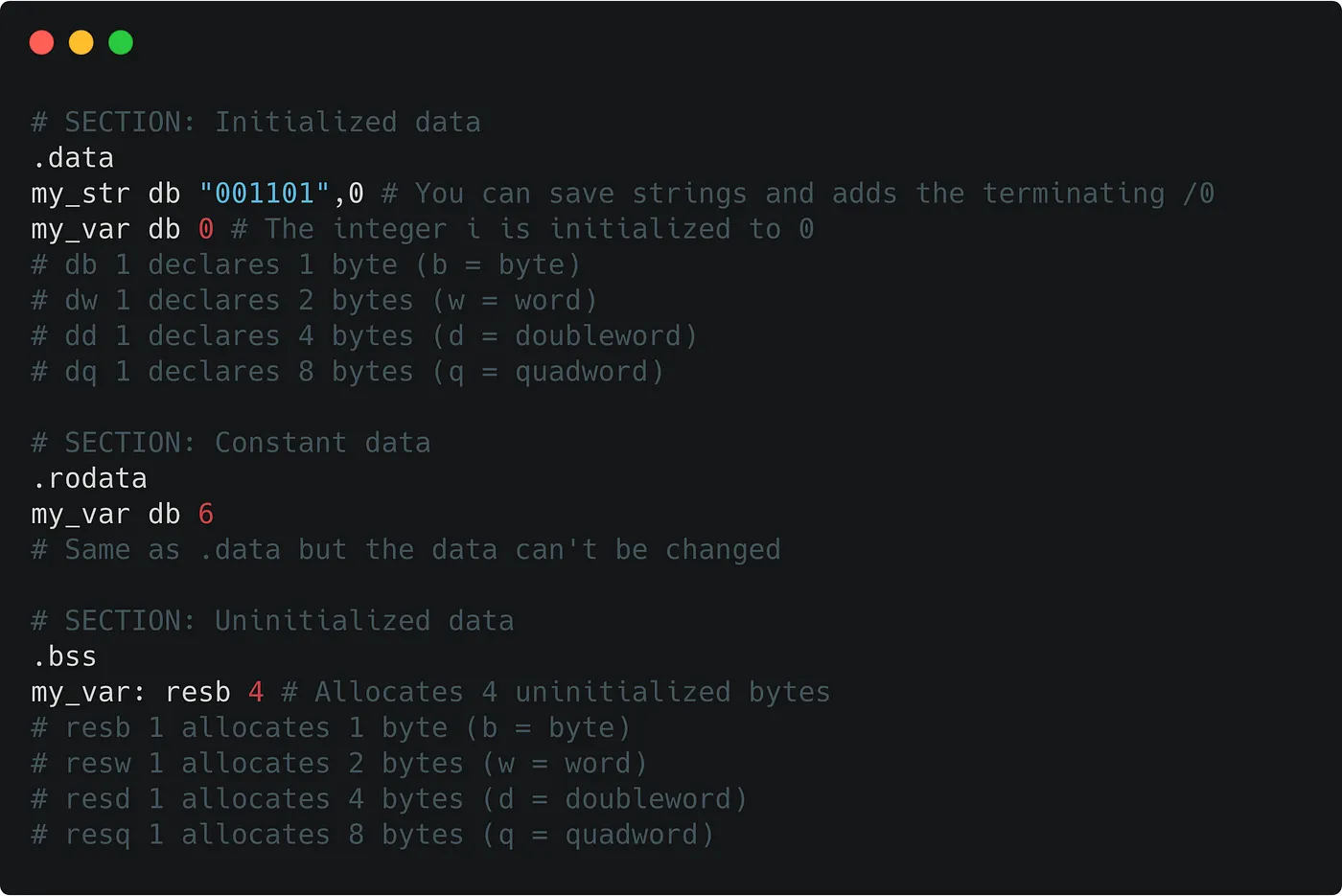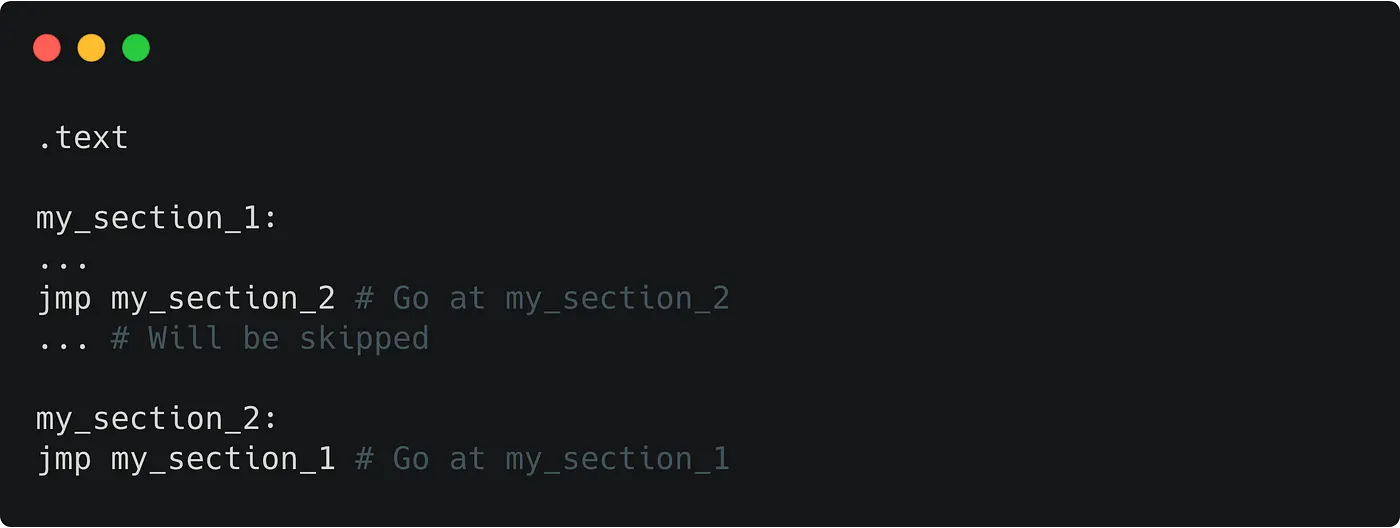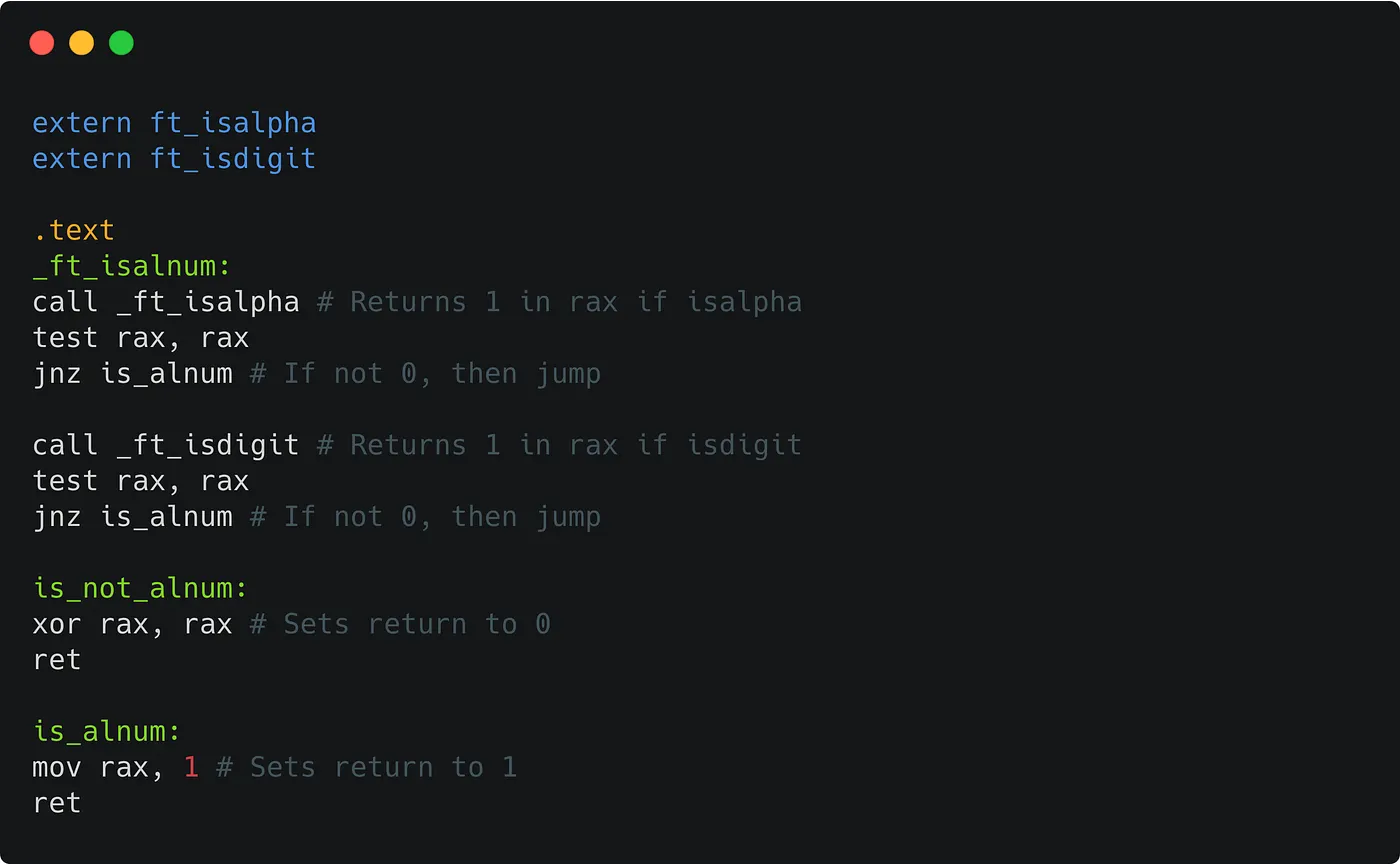 Photo by Will Porada on Unsplash
Photo by Will Porada on Unsplash
Dive into Assembly: Crafting Your First Functions (Intel x86–64 syntax)
Ever wondered what's happening under the hood of your computer? While C is often considered a low-level language, it still abstracts many of the raw instructions executed by your processor. That's where Assembly comes in – the language that speaks directly to your machine's heart. 🖥️💓
In this article, we'll equip you with the essential tools to understand and create your own Assembly functions. So, put on your hard hat, and let's start building! 👷♂️🔧
Getting Started: The Assembly Playground
Assembly language varies depending on your processor's architecture. We'll focus on the Intel x86–64 syntax, the lingua franca of most desktop computers.
Your Toolkit: NASM and Friends
To begin your Assembly adventure, you'll need:
- A text editor (your trusty code sword ⚔️)
- The NASM compiler (your magic wand for transforming Assembly into machine code 🪄)
Here's how you use NASM:

Pro Tip: The
-fargument specifies the output format. For instance,macho64is the format for modern macOS executables.
Debugging: Your Assembly Detective Kit 🕵️♂️
As you venture deeper into Assembly, debugging tools will become your best friends. Get acquainted with lldb and gdb – they'll help you solve the mysteries of your code.
Learn more about debugging x86-64 Assembly here
The Language of the Machine
Assembly is like a choreographed dance of commands for your processor. Each line represents a single step – one instruction for your CPU to execute.
Assembly vs. Machine Code: Not Twins, but Close Cousins
A common misconception is that Assembly and machine code are identical. While they're closely related, they're not the same:
- Machine Code: The binary language your computer ultimately executes.
- Assembly: A human-readable representation that still requires compilation.
Assembly offers several advantages:
- Readability: Easier for humans to understand
- Structure: Allows for better program organization (variables, macros, sections)
- Abstraction: A thin layer above raw binary, but still very close to the metal
Anatomy of an Assembly File
An Assembly file (.s) is typically divided into four main sections:

- data: Initialized data storage
- rodata: Read-only data (constants)
- bss: Uninitialized data storage
- text: Where the actual code logic resides
If no section is specified, .text is the default – that's where the action happens!
Memory: Your Assembly Playground
In the world of Assembly, you have three types of memory at your disposal:
- Registers: Lightning-fast, but limited in number
- Memory Addresses (RAM): Vast storage, but slower to access
- Constants: Immutable values embedded in your code

The Register Family
Registers are like the VIP lounge of memory – exclusive and fast. Here are the key players:
General-Purpose Registers
rax,rbx,rcx,rdx: The workhorses of Assembly instructionsa: Accumulator (often for arithmetic)b: Base (often for memory addressing)c: Counter (loops, anyone?)d: Data (general data operations)
Index Registers
EDI: Destination indexESI: Source indexEBP: Stack base pointerESP: Stack pointerEIP: Instruction pointer (next instruction's address)
Segment Registers
For simple functions, you can usually ignore these: CS, DS, SS, ES, FS, GS
The Assembly Instruction Set: Your Programming Toolkit
Each line in Assembly is a single instruction, typically following this format:
COMMAND ARG1, ARG2Let's explore some essential instructions:
Data Movement: The Assembly Shuffle
mov — <dst> [reg, mem], <src> [reg, mem, const]
Copies data from src to dst. It's like teleportation for data! 🌟
push — <data> [reg, mem, const]
Adds data to the top of the stack. Think of it as stacking plates.
pop — <dst> [reg, mem]
Removes the top item from the stack and puts it in dst. Like taking the top plate off the stack.
lea — <dst> [reg], [<src>] [mem]
"Load Effective Address" – Saves the address of src in the register. It's like remembering where you put something without actually moving it.
Math Operations: Assembly Arithmetic
add — <dst> [reg], <src> [reg]
Adds src to dst and stores the result in dst.
sub — <dst> [reg], <src> [reg]
Subtracts src from dst and saves the result in dst.
dec — <dst> [reg]
Decreases the given register by 1. It's like a tiny countdown.
inc — <dst> [reg]
Increases the given register by 1. Small steps, big results!
Control Flow: Navigating Your Code
call — <function_name>
Calls a function. It's like shouting "Hey, function_name, do your thing!"

jmp — <dst_location>
Unconditional jump to a section. Like teleporting in your code!

j<dst_location>
Conditional jump. It's like a "Choose Your Own Adventure" for your code.
Comparison and Testing
cmp — <reg0> [reg], <reg1> [reg]
Compares reg0 and reg1, setting flags for conditional jumps.
test — <reg0> [reg], <reg1> [reg]
Performs a bitwise AND between reg0 and reg1, setting flags.

ret Ends the function and returns to the caller. Like saying "My job here is done!"
Calling Conventions: The Assembly Etiquette
When functions talk to each other in Assembly, they follow certain rules. For example, arguments are often passed in this order: %rdi, %rsi, %rdx, %rcx, %r8, and %r9.
Dive deeper into calling conventions here
Syscalls: Talking to the Kernel
The kernel provides many system calls for interacting with the OS. It's like having a direct hotline to the core of your computer!
Check out the complete syscall list here
Putting It All Together: A Simple Example
Let's look at a basic Assembly function: ft_isascii

This function checks if a given character is within the ASCII range. It's like a bouncer for the ASCII club! 🚫🎉
Memory and the Stack: A Deeper Dive
The intricacies of memory management and stack operations in Assembly deserve their own spotlight. Stay tuned for a future article where we'll unravel these mysteries!
Resources for Your Assembly Journey
- x86-64 Cheatsheet: Your quick reference guide
- Instruction List: An extensive catalog of Assembly instructions
Ready to flex your Assembly muscles? Check out my repo where I've implemented various basic functions in Assembly. It's like a playground for low-level coding enthusiasts! 😊
Remember, mastering Assembly is like learning to speak directly to your computer. It takes time and practice, but the insights you gain are invaluable. Happy coding, and may your registers always be full! 🖥️💪